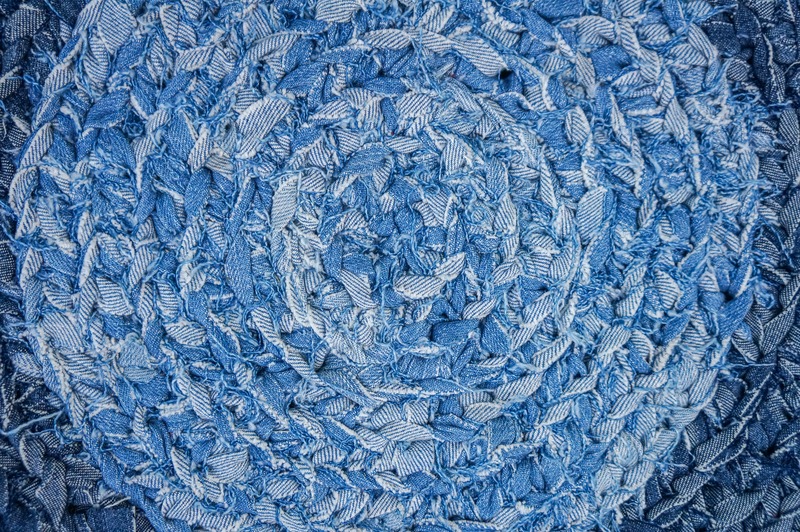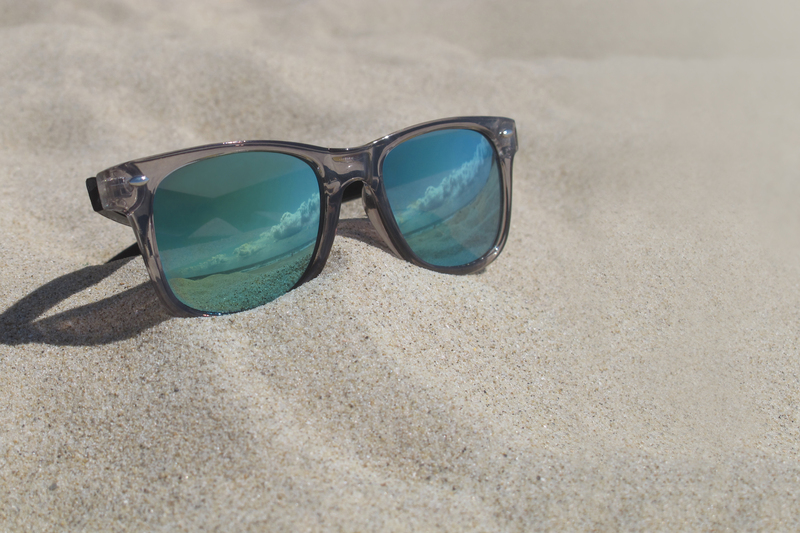Incorporate Upcycled Pieces into Your Daily Life for a Greener Tomorrow
Looking for ways to live more sustainably without sacrificing style or convenience? Incorporating upcycled pieces into your daily life is one of the most effective steps you can take toward crafting a greener tomorrow. Upcycling - transforming unwanted materials or objects into new, valuable items - not only reduces waste but also infuses your home and lifestyle with unique, creative energy. In this comprehensive guide, we'll explore how to integrate upcycled items into your routine, offer stylish and practical ideas, and explain the far-reaching impact of this eco-friendly choice.
Understanding Upcycling: A Pathway to Sustainable Living
Upcycling stands out as a powerful solution in the fight against waste and overconsumption. Rather than recycling items back into raw materials, upcycling gives products a second life with minimal energy expenditure. Every time you use upcycled pieces in your everyday routine, you help divert items from landfills, conserve natural resources, and support the greener economy.
Benefits of Incorporating Upcycled Pieces
- Reduces landfill waste.
- Minimizes need for virgin resources.
- Saves energy compared to recycling or manufacturing new goods.
- Inspires creativity and individuality in design.
- Supports local artisans and small eco-friendly businesses.
- Often more durable and unique than mass-produced items.

How to Incorporate Upcycled Pieces into Daily Life
Embracing the upcycle movement is easier than you think. Here are several ways you can include upcycled objects in your daily life for meaningful environmental impact.
1. Upcycled Home Decor: Style with Substance
Your home is the perfect canvas for upcycled treasures. From statement pieces to subtle accents, bringing in reclaimed materials adds character and charm.
- Furniture: Look for tables crafted from reclaimed wood, shelves fashioned from old ladders, or benches built from repurposed doors. These pieces not only tell a story but also stand up to daily wear and tear.
- Lighting: Create or purchase lamps made from vintage bottles, industrial piping, or obsolete machinery parts for a unique glow.
- Wall Art: Hang art made from upcycled materials like scrap metal, driftwood, or textiles. These pieces double as conversation starters and eco-friendly decor.
2. Fashion & Accessories: Wearable Upcycling
The fashion industry is notorious for waste and pollution, yet upcycled fashion offers a stylish alternative. Integrate upcycled clothing and accessories into your wardrobe for both environmental and aesthetic benefits:
- Upcycled Clothing: Seek out brands that use fabric scraps, vintage materials, or reworked textiles to construct new garments.
- DIY Fashion: Transform old t-shirts into tote bags or add new details like patches and embroidery to jeans for a fresh look.
- Jewelry: Enjoy artistic pieces made from reclaimed wood, recycled metal, or even bike chains.
3. Upcycled Kitchen and Dining Essentials
The kitchen is ripe for eco-friendly upgrades. Upcycled kitchenware doesn't just look good - it cuts down on single-use plastics and supports sustainability each time you cook or dine.
- Serving Ware: Use bowls made from discarded coconut shells or serving trays fashioned from repurposed glass and ceramics.
- Storage Solutions: Mason jars, vintage tins, and upcycled containers organize your pantry without the environmental cost of new plastic storage.
- Utensils: Opt for serving spoons and spatulas crafted from recycled materials for a unique, eco-forward aesthetic.
4. Office and Workspace Innovations
A green mindset belongs at work too! Upcycled office supplies keep your productivity high and your carbon footprint low.
- Desks & Organizers: Invest in desks assembled from salvaged wood or file organizers fashioned out of used packaging materials.
- Stationery: Use recycled paper products and pens made from upcycled plastics to minimize waste in your daily work.
- Chair Mats: Some companies make floor mats from upcycled tires, giving new life to what would otherwise be landfill.
5. Upcycled Pieces for Outdoor Living
Don't forget to take sustainable living outside! Incorporating upcycled objects into your garden and outdoor spaces will transform them into eco-conscious havens.
- Planters: Repurpose old boots, teapots, or even tires as quirky plant holders.
- Outdoor Furniture: Pallets can become benches, and unused barrels can be reimagined into tables or rainwater collectors.
- Garden Paths: Use broken tiles, bricks, or glass to create colorful stepping stones.
Why Upcycling Matters for a Greener Tomorrow
Every step you take to incorporate eco-friendly upcycled goods into your daily routine extends well beyond your own home. The environmental benefits of upcycling ripple through communities, ecosystems, and economies worldwide.
Environmental Impact
- Resource Conservation: Upcycling saves natural resources by reducing the demand for virgin materials such as wood, metal, and plastic.
- Pollution Reduction: Creating new products from raw resources often involves pollutants and greenhouse gas emissions. Upcycled goods use less energy and generate less waste.
- Landfill Alleviation: The more items are upcycled, the fewer end up clogging landfills, which are major contributors to methane gas emissions.
- Creative Circular Economy: Upcycling invigorates local economies by supporting artisans, small businesses, and creativity instead of resource-intensive manufacturing.
Simple Upcycling Projects to Get Started
Ready to try it yourself? Kickstart your own upcycled daily habits with these easy, rewarding projects:
DIY Upcycled Tote Bag
Turn old t-shirts into handy grocery totes - no sewing required! Cut off the sleeves, widen the neckline, and snip the bottom into fringe. Tie the fringe together, flip the shirt inside out, and you have a reusable, upcycled shopping bag.
Upcycled Jar Vases and Organizers
Don't toss those empty glass jars. Clean them thoroughly and decorate with twine, washi tape, or glass paint. Use for storing utensils, makeup brushes, or fresh flowers.
Furniture Flip - Pallet Coffee Table
Pallets are versatile building blocks. Sand down a pallet, attach caster wheels, and paint or stain to match your interior. Top with glass for a unique coffee table that sparks conversation.
Where to Find Upcycled Pieces for Everyday Use
Not a DIY enthusiast? No problem! Integrating upcycled goods into your lifestyle is simple with today's wide selection of eco-friendly brands and artisan markets.
- Online Marketplaces: Platforms such as Etsy, eBay, and even Instagram feature sellers specializing in upcycled products.
- Local Artisans & Boutiques: Farmers' markets, holiday fairs, and small shops often carry one-of-a-kind upcycled goods.
- Charity Shops & Thrift Stores: Upgrade thrift store finds with a little creativity to make them your own.
- Eco-Friendly Brands: Support companies with a transparent commitment to upcycling. Many detail their production processes and the reclaimed materials used.
Tips for Seamlessly Integrating Upcycled Items into Your Lifestyle
- Start Small: Replace a single kitchen item, like a spatula or serving tray, with an upcycled alternative. Over time, add more pieces.
- Mix and Match: Blend upcycled furnishings or accessories with your existing decor for a layered, interesting look.
- Seek Quality: Choose well-made upcycled goods from reputable sources to ensure longevity and durability.
- Prioritize Functionality: Select upcycled items you'll use daily - this keeps them out of the landfill and maximizes their utility.
- Share Your Story: When guests admire your upcycled finds, educate them on the value of reuse and inspire others to follow your lead.

A Look at the Future: Upcycling and the Global Green Movement
As the world shifts towards more responsible consumption habits, upcycling is emerging as a key trend in the global green movement. Innovative designers and major brands alike are exploring new ways to upcycle everything from plastic waste to industrial scraps into high-quality consumer goods. Cities are supporting upcycling initiatives with community workshops and education, while consumers demand greater transparency and sustainability in manufacturing.
By continuing to incorporate upcycled items into your life, you're part of a groundswell that redefines waste as opportunity and insists on thoughtful resource stewardship.
Conclusion: Towards a Greener Tomorrow with Everyday Upcycling
A more sustainable world starts with the choices we make each day. By embracing upcycled pieces in your home, wardrobe, kitchen, and beyond, you're investing in a brighter, greener future. Not only do upcycled goods reduce demand on the planet's finite resources, but they also tell meaningful stories of creativity, resilience, and hope.
Incorporate upcycled pieces into your daily life and discover the joy of living lighter on the earth, one beautiful object at a time. Whether you start with a single upcycled vase or an entire room makeover, each decision brings us closer to a sustainable tomorrow.